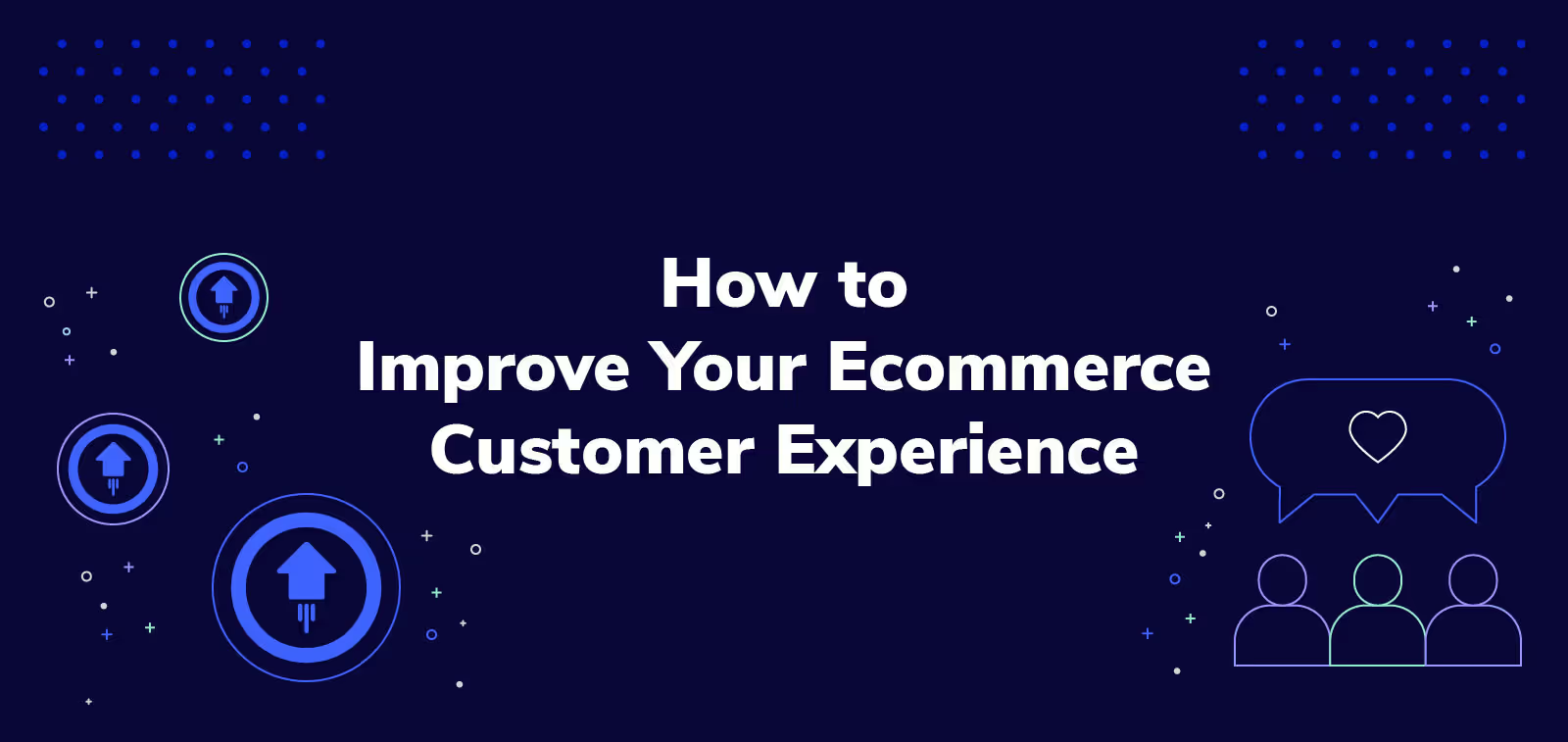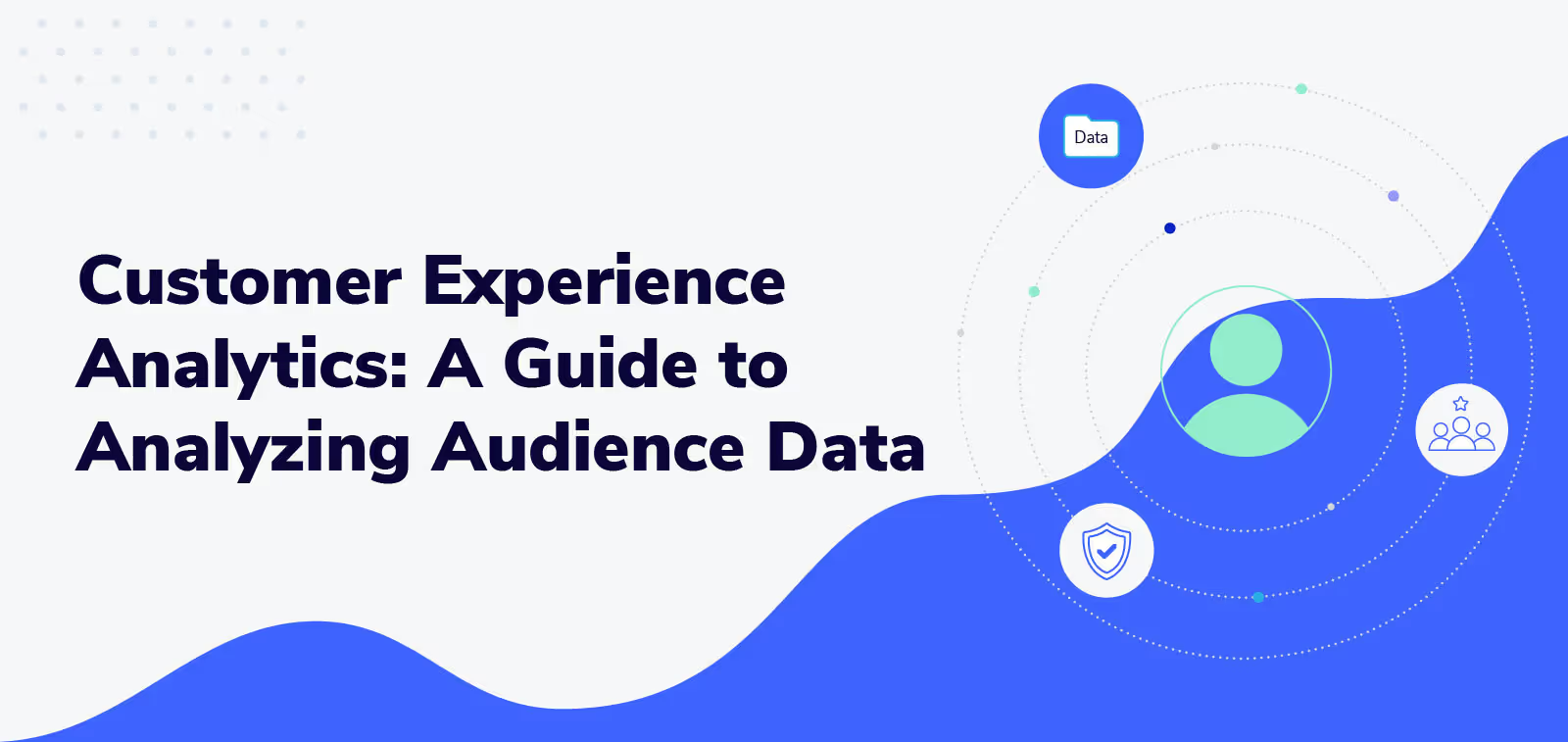How to Define and Improve Customer Experience Optimization

In a recent PwC survey, 32% of consumers said they'd walk away from a brand they love after a single bad user experience — which goes to show that the risks of getting customer experience (CX) wrong are huge.
However, there are proven ways to improve CX and reduce that risk. After 10 years of helping more than 900 enterprises deliver organization-wide CX programs, McKinsey was able to deliver:
- 15-20% boost in sales conversions
- 20-50% drop in service costs
- 10-20% improvement in customer satisfaction
These results demonstrate that companies can improve their customer experience if they follow a consistent and proven approach. By understanding what customer experience optimization truly is and implementing a repeatable set of best practices, merchants can measurably improve business outcomes and reduce churn.
What is customer experience optimization?
Customer experience optimization (CXO) is the process of learning about customer needs and expectations, checking where they're not met, and taking steps to reach and exceed them.
Another way to understand CXO is to look at what it does. In a 2021 NTT survey of CEOs, 48.3% of respondents said their CX strategy had increased customer engagement; 46.3% had seen increased customer loyalty; and 43% saw customer acquisition grow. In other words, when you make CXO a priority, customer retention improves.

What does the customer experience include?
Before you can optimize the customer experience, you need to know what it encompasses. Every point of contact between you and a customer, from a social media ad to a website pop-up, is an experience that can pull the customer deeper into the sales funnel. Here are just a few points of contact to consider.
Cadence and quality of SMS and email communications
SMS and email marketing messages are core post-purchase and post-signup touchpoints. Optimizing these elements means packing as much value as possible into the number of messages your customers want to receive.
While email is still king, SMS is catching up fast. According to Attentive’s 2021 SMS Marketing Consumer Trends report, 58% of consumers are happy to receive multiple texts per week from their favorite brands. Approximately 19% are open to hearing from their favorite brands on a daily basis.
Don’t automatically assume that your customers are in that 19%, whether they prefer email or SMS. Work toward identifying the sweet spot with channel mix and frequency, testing different messaging that initiates action on the customer’s part. As you steadily gather information about your customer’s preferences, you can create more personalized experiences using various channels like email and chat.
That said, if you start seeing conversions dip and unsubscribes inch up, reevaluate your content mix and send frequency.
Your email and SMS content touches several key aspects of the customer experience.
- Onboarding: A new purchase or signup is the perfect opportunity to send a welcome message from the founder, reminder of policies, and promos on future orders.
- Cross-selling and upselling: Email is a perfect channel for sending personalized product recommendations, which can influence repeat purchases.
- Surveys: Are you sending too many messages? Are customers happy with your products? Consider using SMS to send quick, one-question satisfaction surveys.
Just as you want to find the right mix and frequency of email and SMS, it’s important to approach each with the right intention. Use email for educating and informing your customers, and SMS for more urgent purposes.
Social media engagement
Social media platforms, from TikTok to Instagram, are more than channels for posting brand-building content. They are channels for customer engagement. And how you engage impacts the customer experience.
Say a customer reaches out in a feed or via direct message with a question or complaint. Sprout Social’s 2022 Social Index Report found that 13% of US consumers expect brands to respond within the first hour of reaching out on social media. A whopping 76% expect a response in the first 24 hours.
Marketing automation platforms like Hubspot can help you keep track of social media conversations, ensuring that none slip through the cracks. Because its social media monitoring tool integrates with its CRM, you track whether your prompt responses lead to website visits or sales.
Customer support interactions
You may have optimized your email, SMS and social media customer experiences, but a rude support agent or lengthy shipping protection plan claim resolution can undo those efforts.
Customer support is an extension of your brand. According to Zendesk’s CX Trends 2022 report, 81% of customers say a positive support experience increases the likelihood they’ll make another purchase.
Besides making agent training a priority, allow omnichannel communication with tools such as Gorgias. Customers can reach out to support on the channel of their choice, such as live chat. Agents can respond in real time while viewing the customer’s order and support history. Thanks to this feature, customers don’t have to rehash their situation if they call about an unresolved issue. These features all play a role in customer experience optimization.
How companies can optimize their customer experience
Once you decide to optimize customer experiences across your organization, it’s best to take a systematic approach to make sure no touchpoint goes unexamined.
Map out your customer journey
Customer journey maps are valuable for tracking and documenting every part of the customer experience. Think of these maps as touchpoint inventories. They help you visualize the customer journey so you can better see which touchpoints create friction and which create genuine brand engagement.
To map your customer journey in three steps:
- Determine your goal. Decide if you want to learn more about the customer journeys you currently offer or if you want to plot an original journey for new customers. The first requires more data, but you'll still need to list all touchpoints for both.
- List all customer touchpoints. As we mentioned earlier, these include every webpage, social media accounts, ads, and any other interface between your business and customers. Even digital real estate you don’t own — like review sites or news articles — can be touchpoints. If you’d rather not use a spreadsheet or sticky notes to map your journeys, use a digital tool such as UXPressia.

- Establish sources of data on the customer journey. A good starting point is Google Analytics (GA), which reveals traffic sources. These traffic sources, whether organic search, direct traffic, email campaigns, and social media referrals, should appear in the touchpoints you list in step 2. GA4, which is replacing Universal Analytics, tracks how well the experience at those touchpoints leads to certain conversion events. These events include purchases, but they can also include your own custom events.
Perhaps you want to see how well a social media ad drives visitors to a landing page where they enter their email and get a promo code for their first order. The promo code appears on a standalone thank you page. A conversion event can be arriving at that thank you page. If you start seeing the conversion rate start to drop month over month, you may need to refresh the ad to improve the experience at that touchpoint.
If you use UXPressia to map your journeys, you can plug the GA4 report on the thank-you page right underneath where you have the touchpoint listed, enabling you to monitor progress from the map itself.
Connect survey results to key performance indicators (KPIs)
The key to effective CXO is making data-driven decisions, which means consulting certain metrics or KPIs after you’ve implemented survey feedback. Without metrics, you're in the dark.
Say you use Medallia to install a short survey on your website with the goal of assessing how easily customers can complete certain tasks.

If you get low ratings from customers seeking to “Return a product,” then you know an element of the post-purchase experience is lacking. Once you’ve taken steps to improve that element, how do you know your improvements led to positive business outcomes? The following metrics can help you find the answer.
Customer satisfaction score (CSAT)
Customer satisfaction scores measure the quality of single interactions, such as a support call or product delivery. For example, if you add live chat as a support communication channel, CSAT helps you determine how well that new feature meets customer expectations.
CSAT is an average of customer answers to a survey asking them to rate their satisfaction level on a numerical scale. Usually, 1 means “very unsatisfied” and 5 means “very satisfied.” CSAT surveys consist of one question, such as “How satisfied are you with your live chat experience (1-5)?”
CSAT = [Number of satisfied customers (4 and 5) / Number of survey responses] x 100
Medallia will not only send the CSAT survey but ask a follow-up question about what customers would improve about the experience. It even calculates the average score and displays the results with customer feedback on a dashboard.
If scores skew lower than you were expecting, perhaps add chatbots to answer more common questions such as “When is my order arriving?” That leaves support agents to handle more complex inquiries.
Repeat purchase rate
Pre-purchase experience optimization mainly focuses on customer acquisition. The post-purchase experience? Customer retention. Repeat purchase rate is a key measure of how well you keep customers in the fold after a first purchase.
Repeat purchase rate = (total number of customers who’ve purchased more than once at the end of a time period ÷ total number of customers) x 100.
Say you make all returns free to combat the existing policy’s low CSAT scores. You could tailor the metric to calculate the rate of repeat purchases only among customers who’ve returned an item. You’ll better understand the extent that the new free returns policy improved the post-purchase experience.
Average contact center response time
Average response time is a contact center operational metric that calculates how long a customer waits for an initial response from a support agent. It has a huge impact on customer satisfaction and the post-purchase experience.
Zendesk found that 76% of customers expect an agent to respond immediately when contacting a company.
Contact center managers hire and train agents based on the average number of daily inquiries and predictable surges in activity, such as during the holidays. Customers generally don’t enjoy contacting support, so the goal is to solve their problems quickly and efficiently.
Average response time = Total agent response time in a month / number of resolved support tickets
Unexpected surges in volume increase average response times. When these occur, look for ticket trends such as a faulty product or a promo code not working. The sooner you fix the problem, the sooner average response times – and the customer experience – can normalize.
Customer lifetime value (CLV)
Customer lifetime value measures the total revenue a company can expect over a typical customer life cycle. As you continue to optimize the customer experience, you should see CLV rise.
Customer lifetime value = Average order value (AOV) x average number of customer purchases
Each side of the CLV equation takes time to grow, and usually a combination of factors are at work. Start by offering product and shipping protection plans to increase AOV – and customer peace of mind – while using personalized product recommendations to increase the number of purchases.
Growing CLV, much like customer experience optimization, is an ongoing process. Customer expectations change over time, but as long as you strive to make brand interactions more efficient and more personalized, you should see improvements in the above metrics.
Net promoter score® (NPS®)
Net promoter score is a measure of customer loyalty. Like CSAT, it’s simple to administer. Unlike CSAT, it determines the likelihood that a happy customer will recommend your brand to others.
It’s one thing to get a five-star CSAT rating on the ease of redeeming a product protection plan. But if your customer support experience is lacking and your website is cumbersome to navigate, you may not have won a customer’s loyalty.
Start the NPS with a question such as “How likely are you to recommend [your brand] to a friend (0-10)?” According to the NPS rubric, customers who answer 9 or 10 are “promoters”; 7 or 8 are “passives,” and 0-6 are “detractors.”
NPS = Percentage of promoters - percentage of detractors
Think of NPS as a way of measuring the total impact of your customer experience optimization efforts. It’s best to administer this survey to customers who’ve had multiple interactions with your brand. Perhaps they’ve purchased twice, routinely open emails, and filled out every CSAT survey you’ve sent.
Test and repeat for best CX optimization results
Customer experience optimization isn’t a one-and-done thing. Optimization is an ongoing process. Continue to map, survey, test, and adapt your strategy — especially as customer expectations change over time. New initiatives will be needed to keep customer satisfaction rates up and retain a competitive advantage across every individual interaction.
If you’re interested in learning more about improving your customer experience optimization strategy, check out “9 Ways to Improve Your Ecommerce Customer Experience.”
Julia, Senior Manager of CRM and Lifecycle Marketing at Extend, believes in rooting marketing decisions in data and creating customer-centric communications. She has over 10 years of experience in CRM and lives in Seattle with her husband, two small children, and dog.
.svg)






























